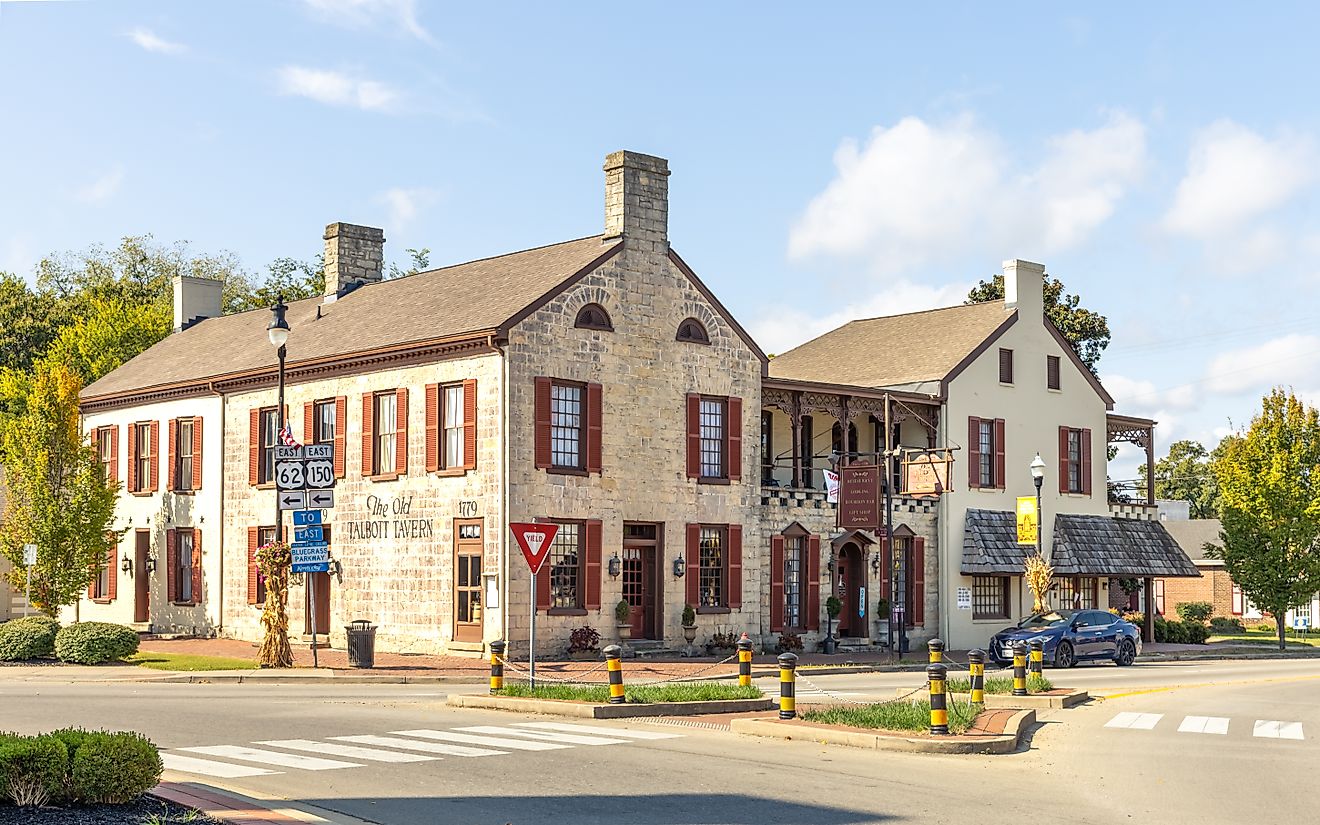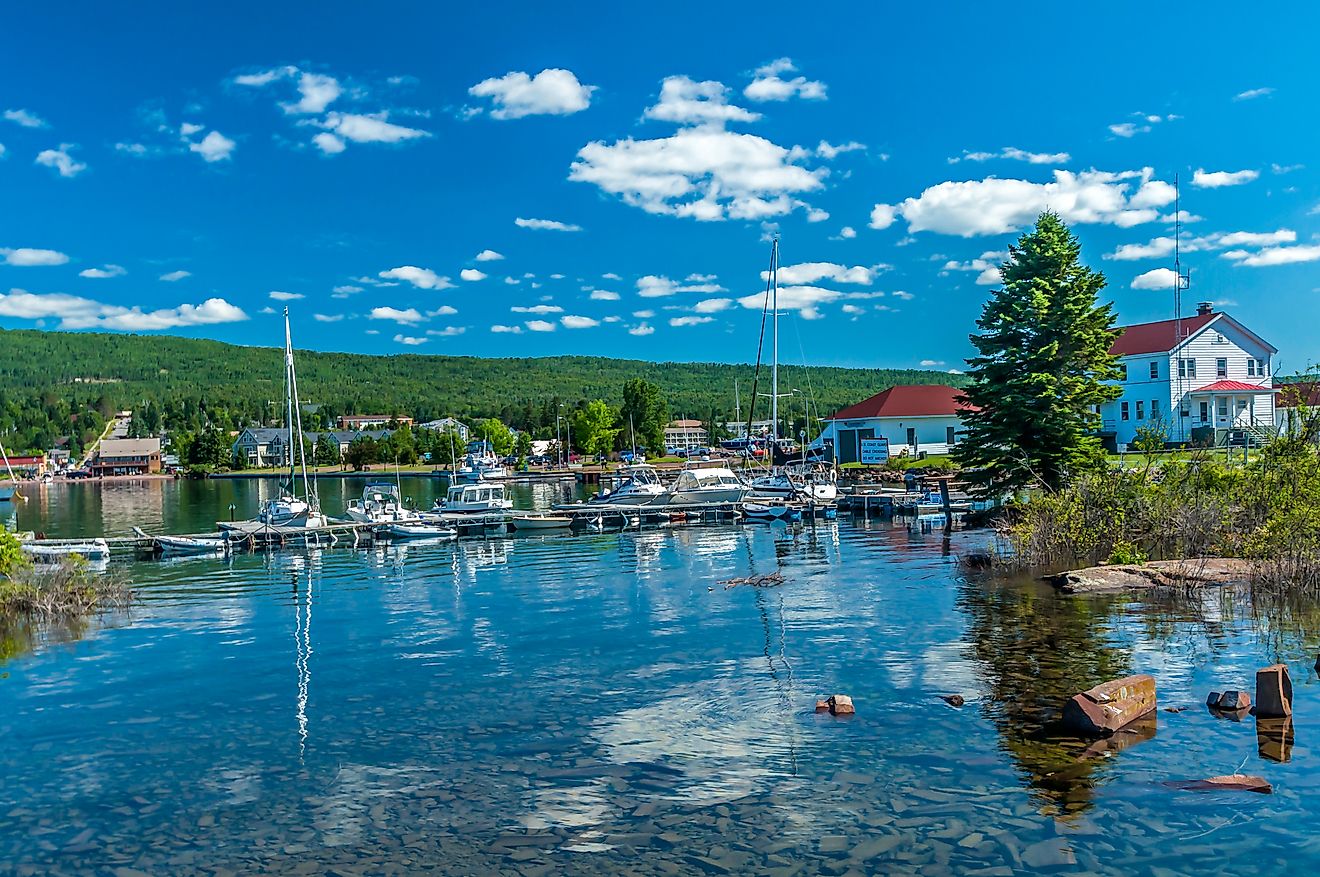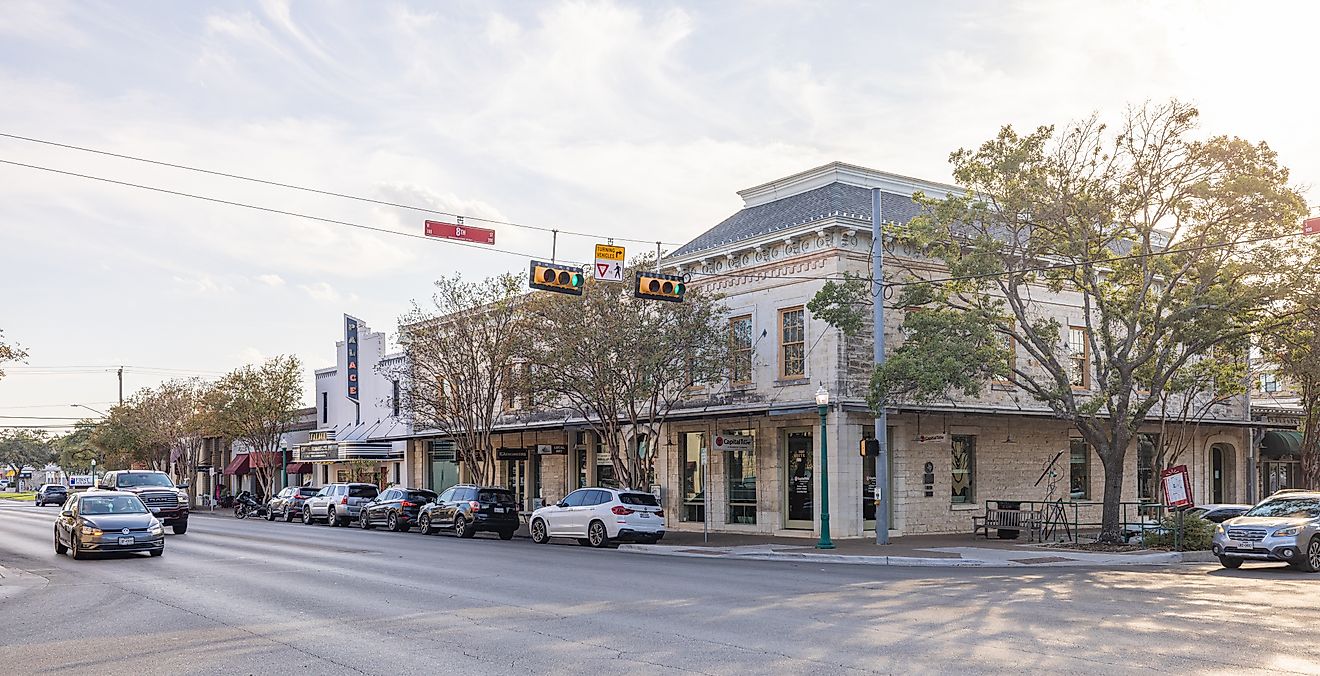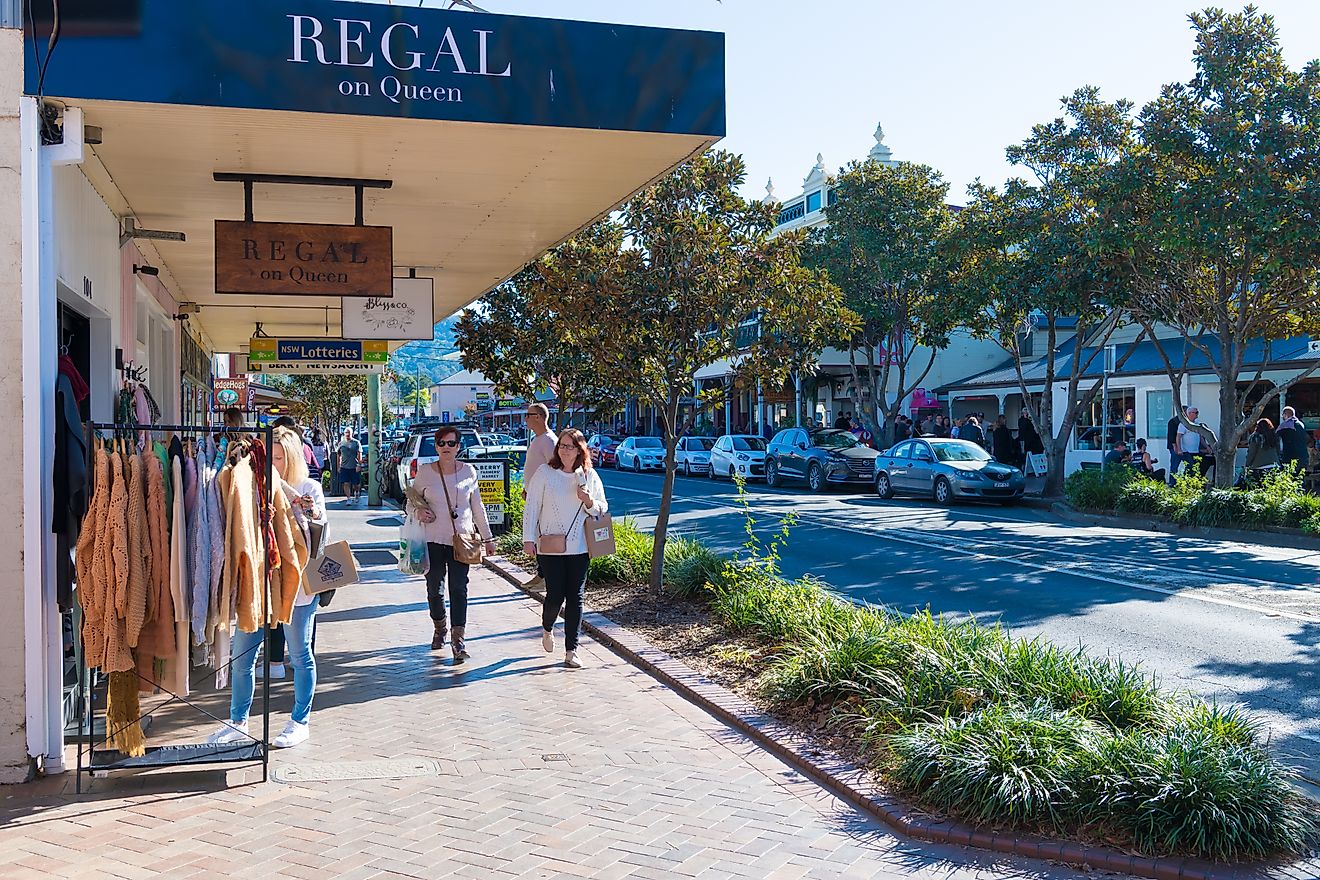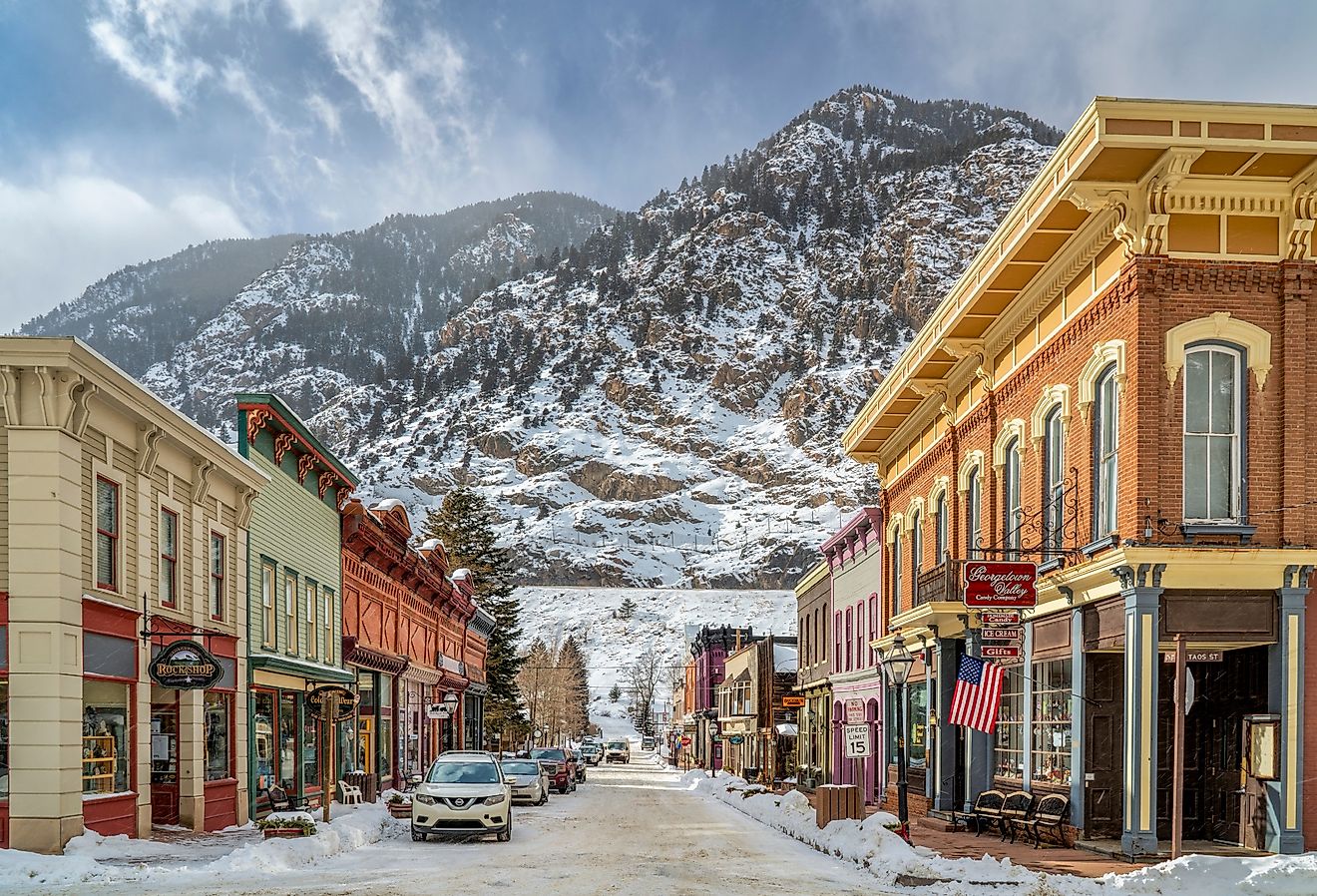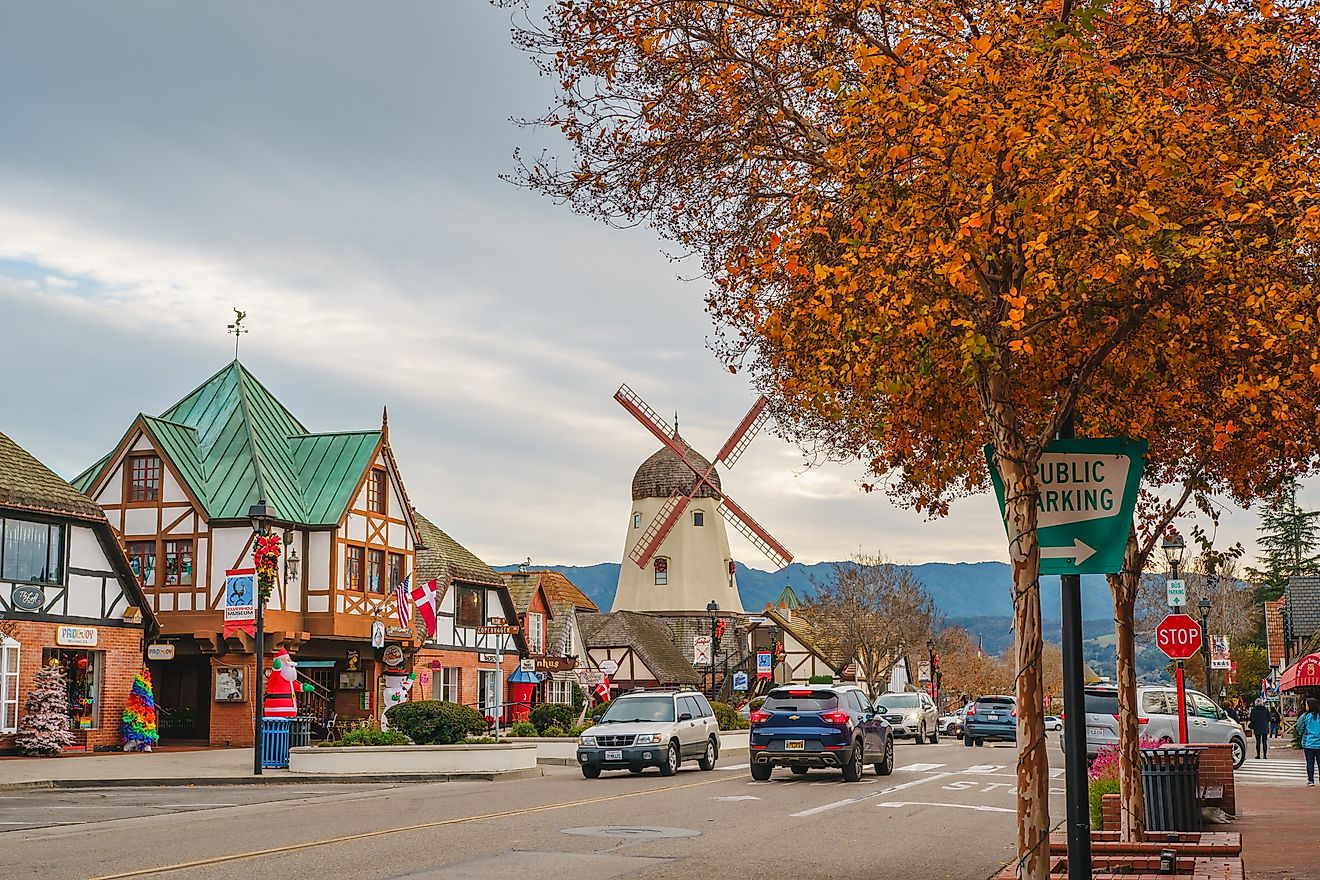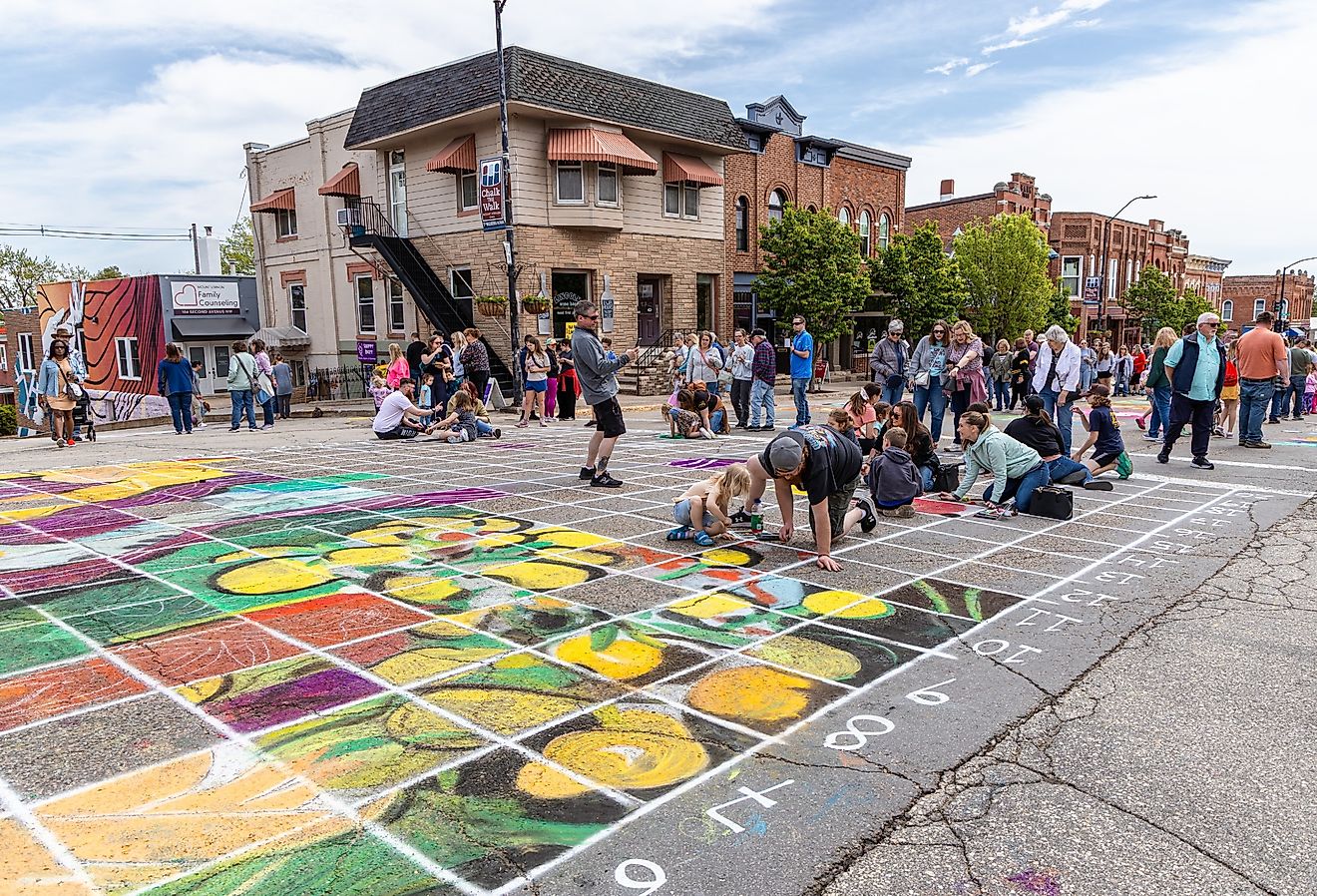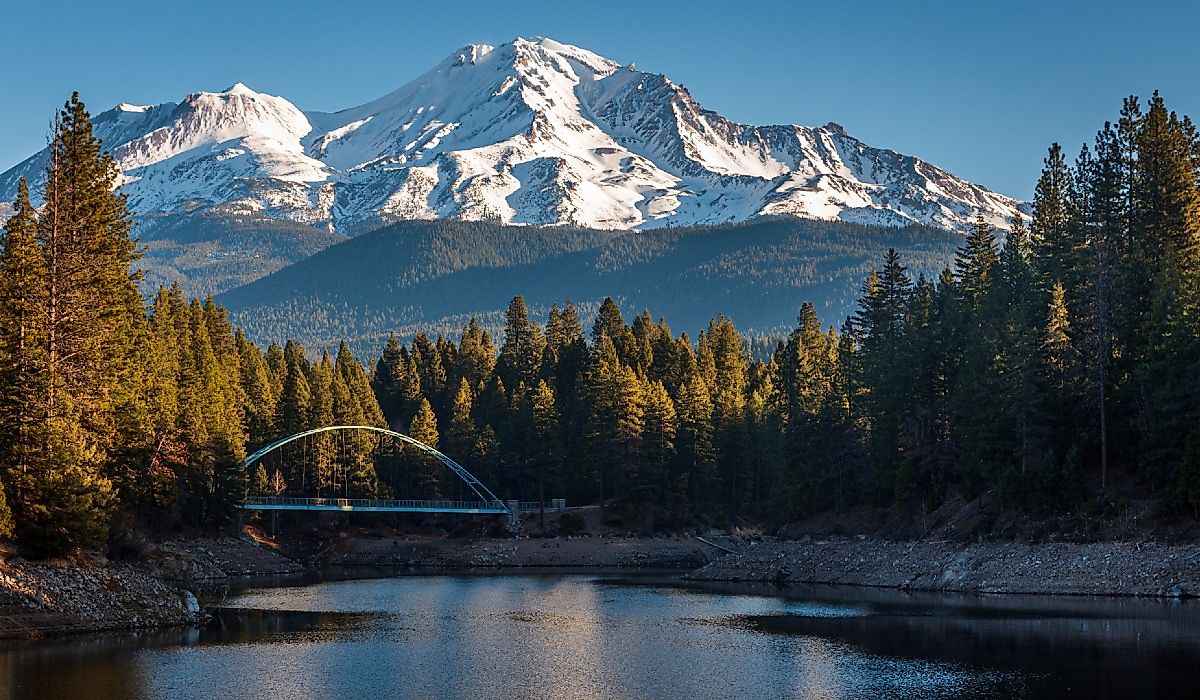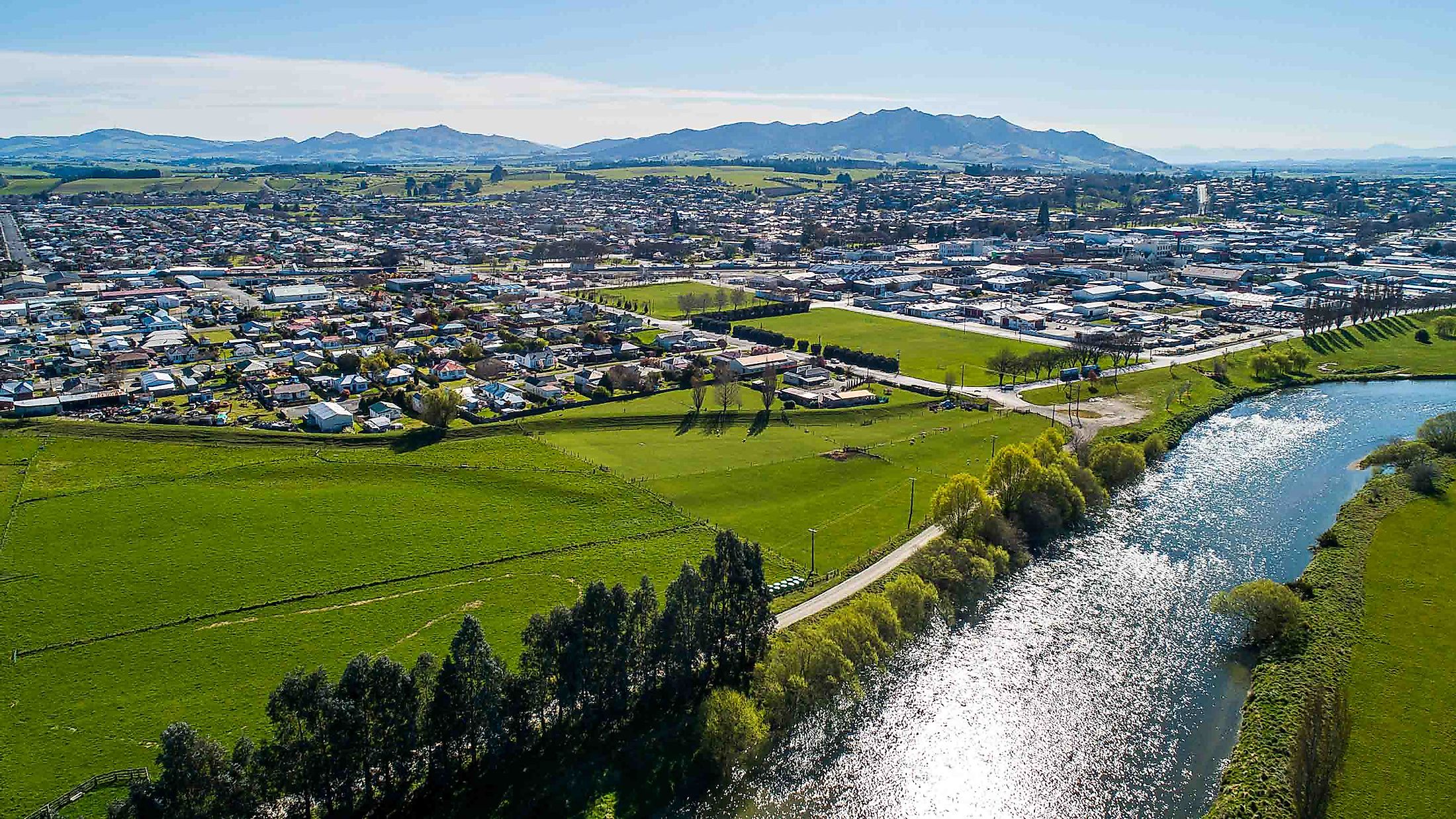
Gore, New Zealand
Gore is Southland's second-largest town, placed picturesquely on the banks of the Mataura River, known as the "Brown Trout Capital of the World." Presenting itself as a cozy hub for tourism with pristine nature, a myriad of hiking trails, the water-fun imaginable, Gore is a town of many facets, hosting the national country music awards.
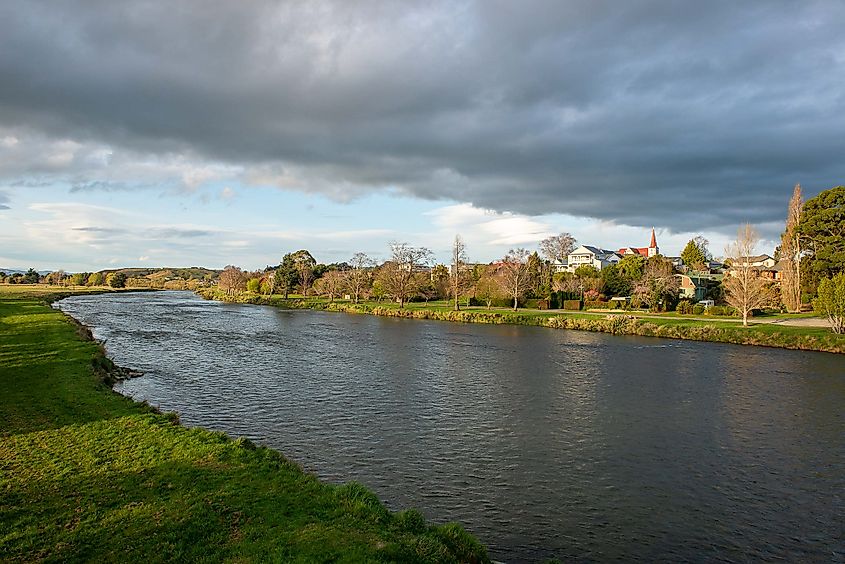
Forty miles northeast of Invercargill, 47 miles northwest of Balclutha, and 7 miles northeast of Mataura, Gore is the junction of the South Island Main Trunk railway and the Waimea branch line to Mossburn and Kingston via Lumsden. Gore is set on the flats on the Mataura River banks. The main town portion extends along the west bank, while the smaller East Gore portion occupies the east bank. The outskirts are undulating plain becoming hilly further to the east, while on the northwest and west, the flats suddenly rise at the 4-mile mark to the Hokonui Hills.
Brief History Of Gore
Before Europeans, there was a single settlement, Tuturau, near Mataura on the flax and tussock flats near the routes used by the Maori travelers. While few passed the area, it was not until July 1853 that Nathaniel Chalmers was guided around Tuturau, and later completed the pioneer journey with Maori chief Reko and Kaikoura into the hinterland along the river that required long fording, with the locality adopting the name, "the Long Ford." By 1964, a road connected nearby settlements to Gore, while the town itself started as a single accommodation house opened in 1862 by the saw-miller Daniel Morton. Called the Long Ford House, it came with horse stables, beds, and liquor as a comfortable rest-stop for those traversing the region. With the first sections of the town surveyed the same year, it was named after Thomas Gore Browne, governor of New Zealand (1855-1861), long before it officially became a borough in 1885.
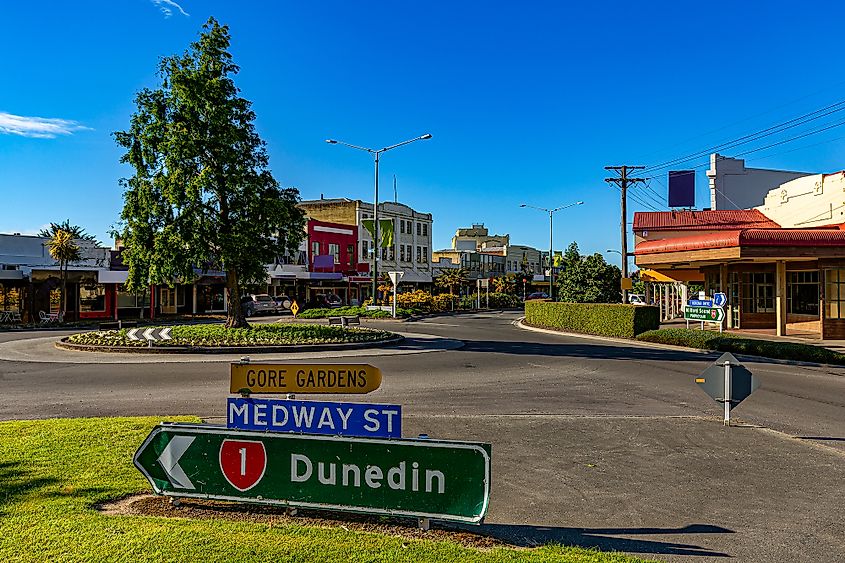
The railway construction began in the early 1870s and opened in 1975, connecting Gore to Invercargill. The town expanded rapidly in the last decade of the century and steadily after that. Nevertheless, in 1959 a series of mysterious fires destroyed the buildings in town that were owned, rented, and considered for purchase by the borough council during windless nights and full moon. With the fires eventually ceasing, the begrudged arsonist was never identified. By the 1960s, Gore was noted with the highest retail turnover out of all towns in New Zealand, but the farm sector that thrived in the post-war years waned in the mid-1970s, causing a drop in population and closure in relevant businesses, along with the historical cereal mill that processed various grains since 1877.
Industry In The Area
Charlton houses Gore's racecourse, airport, and sale-yards, while the former settlements of Chatton, East Chatton, Chatton North, Knapdale, Mandeville, McNab, and Pukerau are its farming districts. A family marae, Ō te Ika Rama, meaning "fishing by the moonlight" is at the nearby McNab, while gold mining took place in Willowbank, Maitland, Wendon Valley, and Waikākā in the Waikākā Valley until around 1940, and coal mines still operate at New Vale and Goodwin. In the 7 to 8-mile vicinity, there are principal workings of limestone quarrying and processing, along with Daggy wool and a fertilizer-mixing plant. Since 1982, the south-western Waimumu hosted biennial 'southern field days,' with businesses promoting rural technology and services of the region. As the largest town in the region, Gore plays the principal shopping center role for the farming community in the extensive district. Grain and cereal production, bacon and ham curing, construction-related materials, livestock foods, and knitwear are the main industrial activities among smaller economic streams.
Attractions In Gore
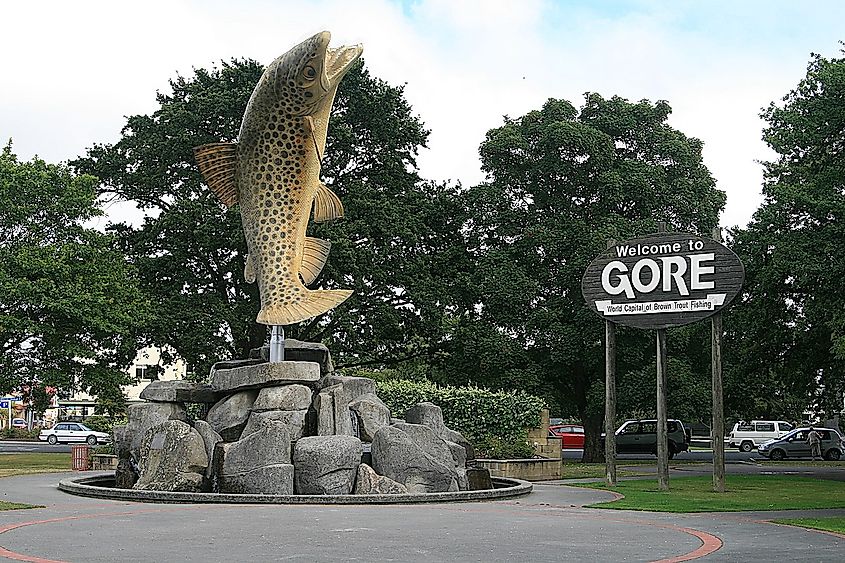
The lack of "tour bus" culture in the region of Southland does not impede but rather promotes Gore and the area as a wonderfully quaint destination for those in search of some tranquility. Accentuating the fact are the quiet side roads with the surrounding open spaces that act as the district's trademark, perfect for days-on relaxation. Nevertheless, in-town, one will find world-renowned and quirky landmarks complemented by the main street's lining of mature trees for a picture-perfect setting. As the backbone of the rural economy for many years, there is a statue of the Romney sheep breed on Gore's Main Street.
The unique Hokonui Moonshine Museum, known as the Te Whānau ō Hokonui marae, is set along Charlton Road. It displays a world-class collection featuring the moonshine whisky 'pioneers' in the Hokonui Hills, celebrating the area's whiskey-making during the Prohibition era. One can buy a bottle of Old Hokonui whiskey made by the original recipe and hear the bootlegger stories, including how it all started with Mary McRae moving to the South Island in 1872 with her seven children from the Scottish Highlands. The Gore Historical Museum holds custody of the local stories and regional records.
Dr. John Money's extensive and valuable 300-piece art collection is secured in the Eastern Southland Gallery with rooms dedicated to the artist Ralph Hotere. The Hokonui Pioneer Village offers an insight into the 19th-century daily life in the region through interactive displays and partly translucent paintings that are viewed from a distance. One must visit the Croydon Aviation Heritage Centre in the nearby Manderville for the largest collection of de Havilland vintage aircraft in the southern hemisphere, including the famed Fox Moth, Dominie Rapid, Dragonfly, and the Tiger Moth.
The world-famed annual Tussock Country-New Zealand's Country Music Festival and NZ Gold Guitar Awards takes place in June and the NZ Line Dancing Championships for perfect indoor events during winter break in the chilly South. The biennial Hokonui Moonshiners Festival offers food stalls, entertainment, and live music, along with the Old Hokonui Whisky to be enjoyed in the venues on the streets.
Activities In Gore
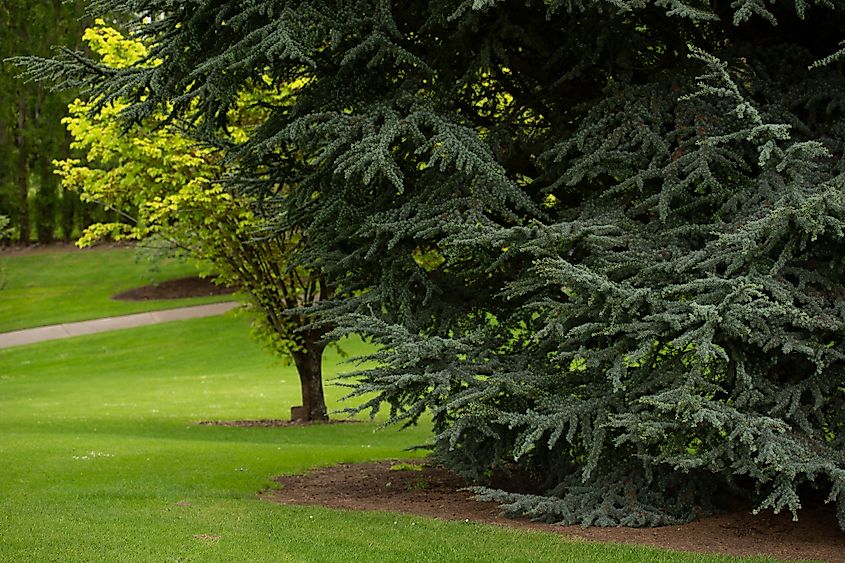
Bannerman Park, also called the "Hidden Valley" for the small stream digging a miniature valley, is thoroughly enjoyed any time of year. From changing leaves and piles of, to jump in, to snow cover, to different flowering blossoms, to green lushness, each tree comes with a name in English and Latin. The over 95 hectares (235 acres) Dolamore Park is an atmospheric reserve with endless activity options to choose from, such as strolling the many paths, mountain biking on the trails, relaxing in a garden setting, or even breaking out a campsite for a scenic picnic with BBQ spots in the area. The park is also excellent for bird-watching, with common sightings of the colorful wood pigeon, kereru, the playful fantail, and the bellbird. The walkways come alive with lights of glowworms at dawn, making for a truly magical time to share with loved ones.
Attracting gatherings of global anglers between October and April, the world-famous Mataura River is known to have one of the highest brown trout populations and catch rates in the world. Although the art of fly-fishing takes patience to learn, when mastered, one is guaranteed to take home a catch upon a wonderful time spent along the banks. For more family fun interacting with nature, the Hokonui Pioneer Village is a great place to feed the ducks with the kids. As a replica of a small village placed in a mid-19th century setting, one can take a look into New Zealand's past, inclusive of the early farm machinery, homemade furniture, rustic schools, and wooden churches. The Gore Public Gardens, with huge wellingtonia tree and a range of exotic trees, makes for a perfect place for some scenic R&R during fall in New Zealand. Conversely, in November, the peony trees are in full blossom, with birds taking over the park.
The journey to the town is worthwhile any time of year, although it is most commonly visited in early autumn when the weather is warm, and the still-intact leaves are a-fire with color. The town then becomes a true toasty delight as the days get colder under the first snow cover.


